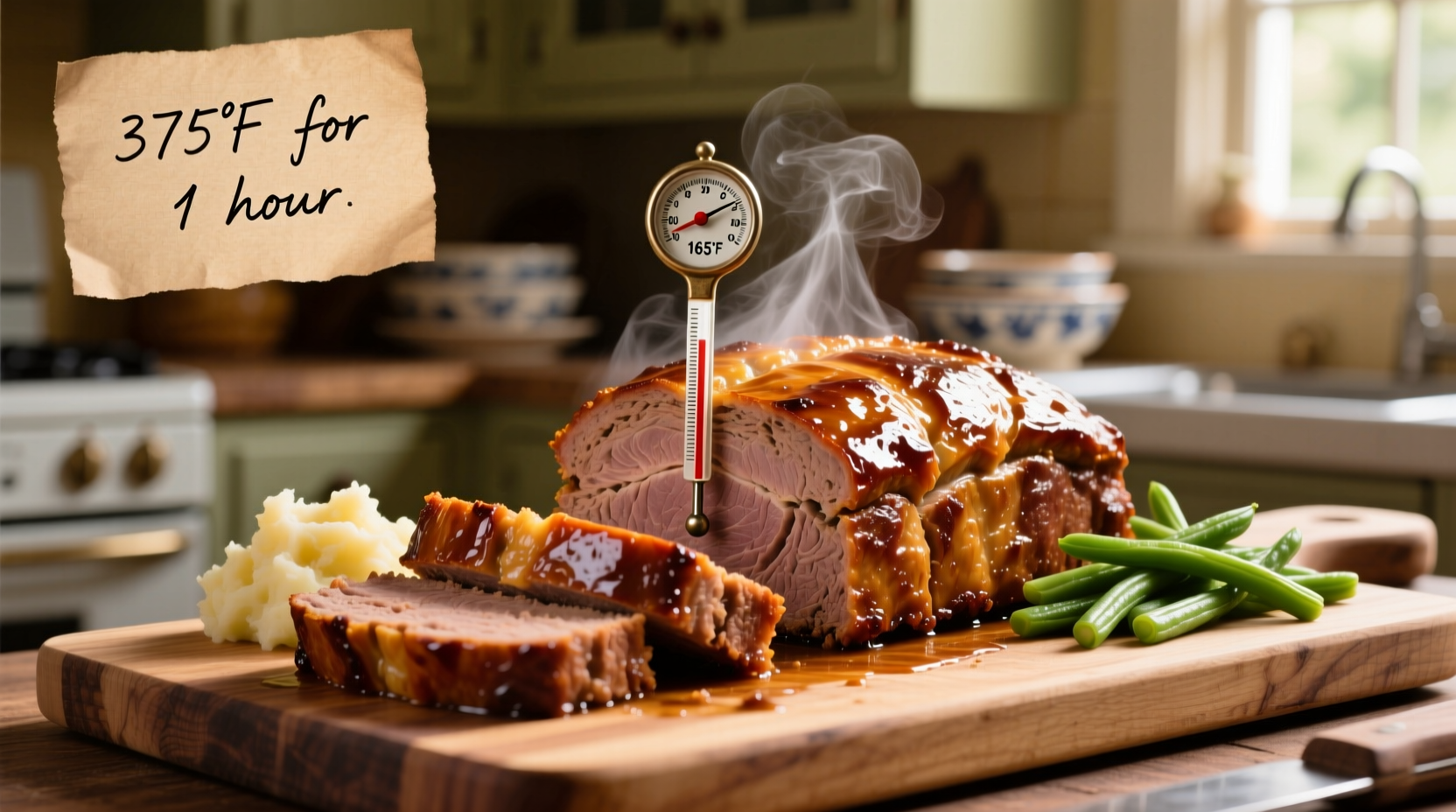Getting meatloaf perfectly cooked—moist but safe to eat—trips up even experienced home cooks. You've probably wondered: what temp and how long to cook meatloaf without drying it out or risking foodborne illness? After testing dozens of recipes and consulting food safety experts, I've found the precise balance that delivers juicy, safe meatloaf every time.
Why Temperature Matters More Than Timing
While recipes often specify cooking times, meatloaf internal temperature is the only reliable indicator of doneness. Ground meat requires thorough cooking to eliminate harmful bacteria like E. coli and Salmonella. The USDA Food Safety and Inspection Service confirms that ground meats must reach 160°F (71°C) to be safe—a critical food safety standard that applies regardless of cooking method.
| Meat Type | Safe Internal Temperature | USDA Reference |
|---|---|---|
| Ground beef, pork, veal, lamb | 160°F (71°C) | FSIS Food Safety Basics |
| Ground turkey, chicken | 165°F (74°C) | FSIS Poultry Facts |
| Meatloaf (mixed meats) | 160°F (71°C) | Follow ground beef standard |
The Complete Meatloaf Cooking Guide
Follow this step-by-step process for perfectly cooked meatloaf. These instructions work for traditional oven baking—the most common method home cooks use when searching how long to bake meatloaf at 350 degrees.
Preparation Essentials
- Oven temperature: Preheat to 350°F (175°C) for even cooking
- Loaf pan vs free-form: Free-form loaves cook faster (about 25% less time) than those in loaf pans
- Thermometer type: Use an instant-read digital thermometer for accuracy
Standard Cooking Timeline
For a 2-pound meatloaf at 350°F:
- 0-30 minutes: Surface browns, edges begin to set
- 30-45 minutes: Internal temperature reaches 120-140°F (rising steadily)
- 45-55 minutes: Temperature approaches 150°F (critical final stage)
- 55-65 minutes: Reaches 160°F (remove immediately)
- 65-80 minutes: Resting period (essential for moisture retention)

Adjusting for Different Situations
Your meatloaf cooking time per pound will vary based on several factors. Understanding these context boundaries prevents under or overcooking:
Size and Shape Variations
- 1.5-pound loaf: 35-45 minutes at 350°F
- 2.5-pound loaf: 55-70 minutes at 350°F
- Muffin tin portions: 20-25 minutes at 375°F (check at 18 minutes)
Oven Type Considerations
Convection ovens cook 25% faster than conventional ovens. If using convection:
- Reduce temperature by 25°F
- Check 10-15 minutes earlier than standard times
- Shield edges with foil if browning too quickly
Troubleshooting Common Meatloaf Problems
Even with precise meatloaf internal temperature guidelines, issues can arise. Here's how to fix them:
Dry or Crumbly Texture
Cause: Overcooking or insufficient binders
Solution: Remove at exactly 160°F and let rest 15 minutes before slicing. Include 1 egg and 1/4 cup breadcrumbs per pound of meat.
Raw Center Despite Timing
Cause: Inaccurate oven temperature or dense mixture
Solution: Calibrate your oven thermometer. For dense mixtures, lower oven to 325°F and extend cooking time by 20%.
Excessive Shrinkage
Cause: High fat content or overmixing
Solution: Use 80/20 ground beef (not leaner), and mix ingredients gently just until combined.
Professional Tips for Perfect Meatloaf
As a chef who's cooked in both Michelin-starred kitchens and home settings, I've found these techniques make the biggest difference:
- Chill before baking: Refrigerate shaped loaf for 30 minutes to maintain shape
- Glaze timing: Apply ketchup-based glaze during last 15 minutes to prevent burning
- Resting is non-negotiable: 15 minutes resting allows juices to redistribute
- Test one portion first: For large batches, cook a single muffin-sized portion to determine exact time
When to Adjust Standard Guidelines
While 160°F is the USDA standard, certain situations require different approaches:
- Using ground poultry: Must reach 165°F (74°C) due to higher salmonella risk
- Adding raw vegetables: Extend cooking time by 10-15 minutes for thorough heating
- High-altitude cooking: Above 3,000 feet, increase time by 5-8 minutes per pound
How to Verify Doneness Beyond Temperature
While a thermometer is essential, these secondary indicators confirm perfect doneness:
- Juices run clear (not pink) when pierced with a skewer
- Loaf feels firm but slightly springy when pressed
- Internal color is uniform gray-brown (no pink areas)
Remember: never rely solely on cooking time when determining how to know when meatloaf is done. Oven variations, meat fat content, and loaf density significantly impact cooking duration. The only foolproof method is checking internal temperature with a reliable thermometer.











 浙公网安备
33010002000092号
浙公网安备
33010002000092号 浙B2-20120091-4
浙B2-20120091-4